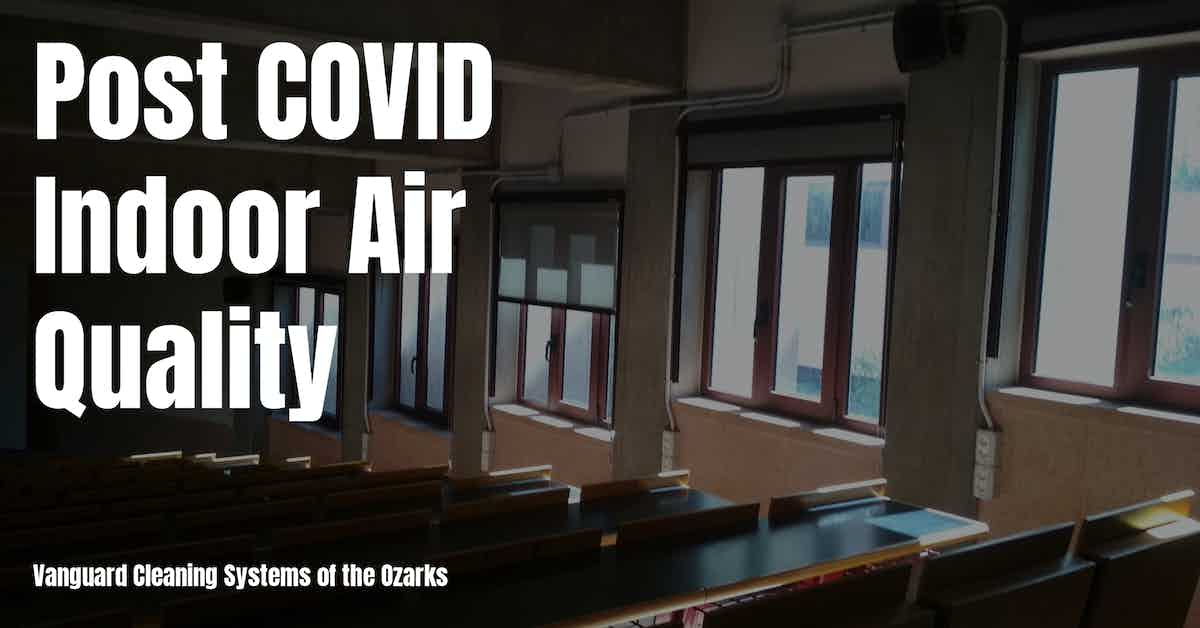An increasing body of scientific work demonstrates that improving indoor air quality will help prevent the spread of deadly airborne pathogens and enhance the health and safety of facility occupants.

The Impact of Indoor Air Quality
The COVID-19 pandemic brought into sharp focus the impact indoor air quality has on our health and how it contributes to the transmission of illness.
Before the pandemic, indoor air pollution was a well-documented but poorly addressed concern, commonly resulting in occupant health challenges, cognitive deterioration, and in extreme cases, death from exposure to toxins produced by commonly used products.
According to the American Geophysical Union;
Close to 4 million people are estimated to die prematurely each year because of the health effects of indoor air pollution.
Poor air quality indoors is linked to a litany of health issues, including allergies, asthma, lung diseases, and cardiovascular diseases.
It is also linked to absenteeism and poorer cognitive performance.
We may regularly produce combustion by-products like carbon monoxide, particulate matter, and smoke from our heating or cooking sources.
In addition, personal care and cleaning products release all sorts of organic compounds; some building and furniture materials release formaldehyde.
Unfortunately, little was done to address the issues with indoor pollution before the onset of the pandemic--likely contributing to the rapid transmission of SARS-CoV-2.
How COVID-19 Modes of Transmission Change the Way We Think of Indoor Air Quality
In prior years, most discussions concerning modern indoor environments typically revolved around sustainability and energy efficiency.
Today, we understand that methods known to improve IAQ can arrest the spread of airborne pathogens like SARS-CoV-2.
According to The White House;
The most common way COVID-19 is transmitted from one person to another is through tiny airborne particles of the virus hanging in indoor air for minutes or hours after an infected person has been there.
While there are various strategies for avoiding breathing that air – from remote work to masking – we can and should talk more about how to make indoor environments safer by filtering or cleaning air.
In fact, research shows changing the air in a room multiple times an hour with filtered or clean outdoor air – using a window fan, by using higher MERV filters in a Heating, Ventilation, and Air Conditioning (HVAC) system, using portable air cleaning devices, and even just opening a window – can reduce the risk of COVID-19 transmission – with studies showing five air changes an hour reduce transmission risk by 50 percent.
How Enhanced Cleaning Methods Impact Indoor Air Quality
Employing enhanced cleaning and scientifically proven, targeted disinfection strategies is critical for ensuring the highest standards of IAQ are achieved and maintained.
The first step calls for the identification and elimination (where possible) of indoor air pollutant sources, including:
- Carpet
- Paint
- Mold and mildew
- Pesticides
- Air fresheners
- Cleaning products
The second step requires the creation and implementation of strategies to reduce indoor pollutant levels and increase indoor air flow by:
- Vacuuming, sweeping, dusting, and mopping daily.
- Increasing airflow through natural means (doors and windows) or mechanical means (HVAC system).
- Improving air filtration by installing MERV-13 or higher HVAC HEPA filters, or by placing commercial-grade air cleaners in tightly controlled environments where increased natural or mechanical airflow is not possible.
- Identifying and removing standing water, spills, and other sources of mold and bacteria growth immediately.
- Eliminating the use of perfumed air fresheners.
- Employing integrated pest control strategies that focus on deterrents rather than chemical elimination, such as moving garbage bins away from the facility and ensuring they remain sealed, properly disposing of food, paper, and cardboard, and regular window cleaning and maintenance, and;
- Upgrading cleaning and disinfectant products to certified VOC-free or Green Seal Certified solutions.
References & Resources
- Ventilation and Coronavirus (COVID-19)
- COVID-19 Brings Indoor Air Quality Monitoring Upfront
- The role of outdoor and indoor air quality in the spread of SARS-CoV-2: Overview and recommendations by the research group on COVID-19 and particulate matter (RESCOP commission)
- Could indoor air quality become part of the post-coronavirus playbook?
- Resource Roundup on Indoor Air Quality, Ventilation, and Filtration (the COVID-19 Edition)
Takeaway
Before the unchecked spread of SARS-CoV-2 dominated the national conversation, indoor air quality was rarely discussed outside of closed circles.
Discussions typically referenced challenges pertaining to sick building syndrome symptoms, asthma-like conditions, and occupant productivity and performance.
Currently, we understand that methods to improve indoor air quality can significantly disrupt the chain of airborne pathogen transmission.
Enhanced sustainable cleaning and targeted disinfection services are necessary components for increasing and maintaining desirable indoor air quality levels.
Outsourcing is a proven method for onboarding skilled service providers equipped with the latest training, processes, and technologies for a fraction of the price of maintaining a comparable service in-house.
Contact us today and discover why Vanguard Cleaning Systems® is the Standard of Clean® for businesses throughout Northwest Arkansas, Missouri, and Oklahoma.
In Oklahoma, dial 918-960-4450
In Arkansas, dial 479-717-2410
In Missouri, dial 417-812-9777
